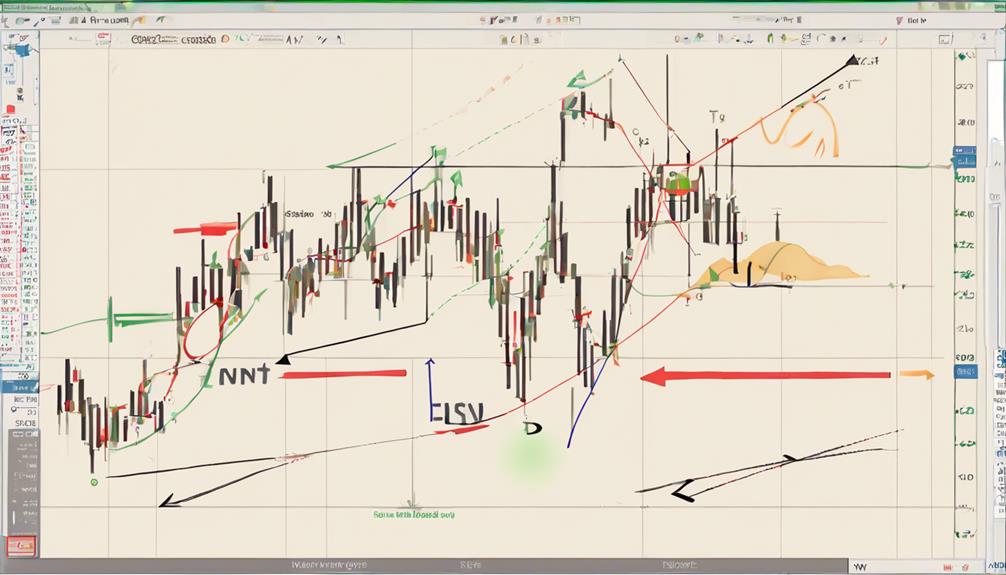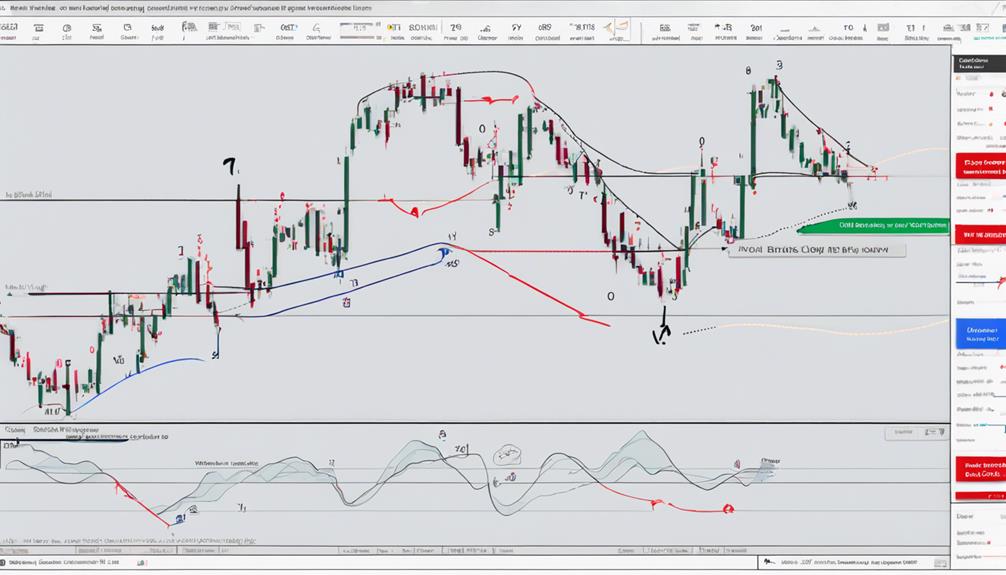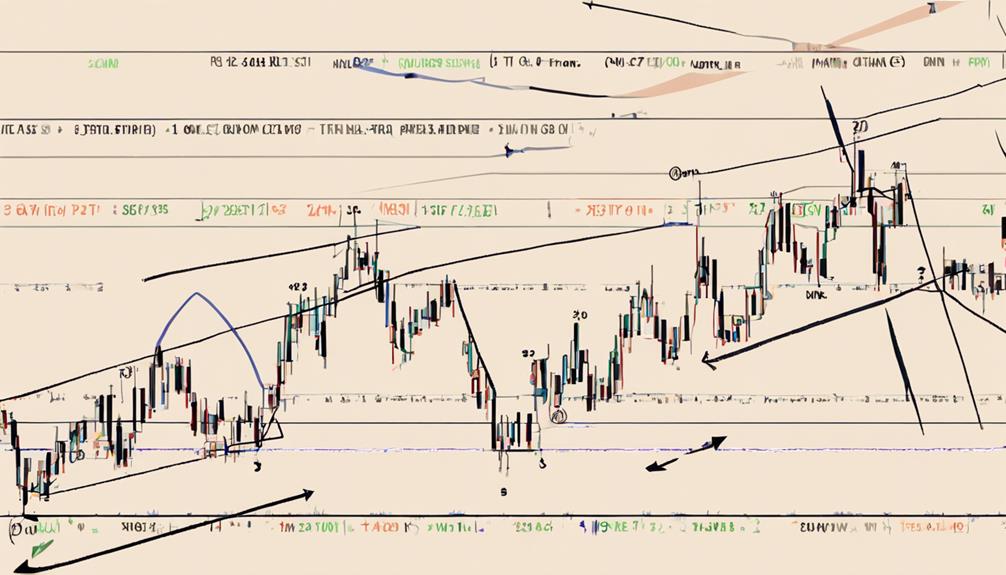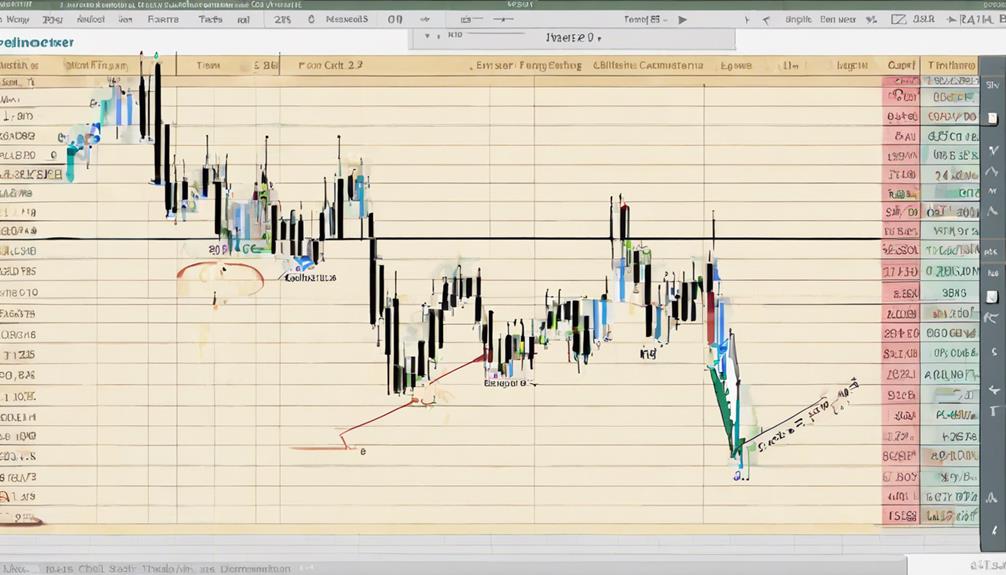Understanding the significance of Elliott Wave corrections in market analysis is paramount for traders seeking to navigate the complexities of financial markets. These corrections serve as essential indicators of potential shifts within the broader market trends, offering traders valuable insights into market behavior.
By grasping the intricacies of corrective waves, traders can strategically position themselves to capitalize on market movements. However, the true power of Elliott Wave corrections lies in their ability to not only identify entry and exit points but also in their potential to forecast future market directions with precision.
Importance of Elliott Wave Corrections
The significance of Elliott Wave corrections lies in their pivotal role in enhancing traders' abilities to pinpoint strategic entry points and discern between impulse and corrective waves within the broader market trend. In the Elliott Wave Principle, corrections are seen as temporary price movements against the prevailing trend. These corrective waves unfold in a three-wave structure, labeled as A-B-C, where wave A represents the initial counter-trend move, wave B is a partial retracement, and wave C is the final move in the correction.
Understanding corrections is essential as they make up approximately 80% of overall market movements. Being able to differentiate between corrective and impulse waves is crucial for traders to avoid mistaking temporary corrections for trend reversals. Corrective waves provide valuable information about potential entry points for trades within the larger trend context. By identifying and interpreting corrective patterns accurately, traders can improve their market timing and increase the likelihood of successful trades based on the Elliott Wave Theory.
Identifying Entry and Exit Points

Strategically pinpointing entry and exit points in the market hinges on the precise identification of Elliott Wave corrections. Corrective waves, integral to Elliott Wave Theory, present traders with opportunities to enter or exit positions at optimal levels within the broader market trend.
By recognizing correction patterns, traders can capitalize on retracements, which often signal potential reversals or continuations of the main trend. Identifying these correction patterns is essential for traders looking to make informed decisions and avoid mistimed entries or exits.
Market behavior during corrective phases can offer valuable insights into potential trading opportunities, enabling traders to enhance their overall strategy. Utilizing Elliott Wave corrections to determine entry and exit points allows traders to navigate the market with greater precision and confidence, ultimately leading to more effective risk management and potentially more profitable trades.
Managing Risk With Corrections

When managing risk with corrections in Elliott Wave Theory, traders can effectively set stop-loss levels and determine optimal risk-reward ratios for their trades. Corrective patterns play a crucial role in risk management by providing insights into market retracements and extensions. Here are four key aspects of managing risk with corrections:
- Identifying Entry and Exit Points: Corrective waves help traders pinpoint potential entry and exit points based on the wave patterns, enabling them to enter trades at favorable levels and exit before adverse movements.
- Setting Stop-Loss Levels: Understanding corrective patterns allows traders to establish appropriate stop-loss levels to limit potential losses in case the market moves against their positions.
- Determining Optimal Risk-Reward Ratios: By analyzing corrective waves, traders can assess the potential risks and rewards of a trade, helping them make more informed decisions and improve their overall risk management strategies.
- Avoiding Trading Against the Trend: Recognizing corrective phases helps traders avoid entering trades that go against the main trend, reducing the likelihood of being caught in false moves and minimizing losses.
Insights Into Market Trends

Providing valuable insights into market trends, Elliott Wave corrections serve as a fundamental tool for traders to understand and anticipate potential shifts in market direction. By comprehending Elliott Wave corrections, traders can differentiate between countertrend moves and the primary market direction, enabling them to make more informed trading decisions.
Corrective waves offer significant insights into market behavior, highlighting potential reversal points and aiding in market timing. Analyzing corrections within the context of Elliott Wave Theory is essential for identifying periods of consolidation and potential trend reversals. This understanding is crucial for traders seeking to enhance their ability to predict market movements and adjust their strategies accordingly.
In essence, corrective waves not only help traders navigate the complexities of market trends but also play a vital role in signaling crucial points for decision-making, ultimately contributing to more successful trading outcomes.
Enhancing Trading Strategies

Enhancing trading strategies can be significantly bolstered through a comprehensive understanding of Elliott Wave corrections. Utilizing corrective waves can provide traders with valuable insights into potential reversal points in the market, enabling them to enter trades at favorable prices within the larger trend. By analyzing corrections, traders can enhance their risk management practices by setting appropriate stop-loss levels to protect their positions. Additionally, identifying corrective structures within the market can help confirm the strength and validity of the overall trend, aiding in trend confirmation for more informed decision-making.
4 Ways to Enhance Trading Strategies with Elliott Wave Corrections:
- Trade Timing: Incorporate Elliott Wave corrections to improve the timing of your trades within the market.
- Risk Management: Utilize corrective waves to set effective stop-loss levels and manage risk more efficiently.
- Trend Confirmation: Use corrective structures to confirm the strength and validity of the current market trend.
- Market Analysis: Analyze Elliott Wave corrections for insights into potential reversal points and trading opportunities.
Can Understanding Elliott Wave Theory Help in Identifying Corrections?
Understanding the basics of Elliott Wave Theory can indeed help in identifying corrections within the market. By utilizing the principles of wave patterns and market psychology, traders can better anticipate and react to corrective movements in various financial markets. Mastering the basics of Elliott Wave Theory can provide valuable insights for informed decision-making.
Frequently Asked Questions
How Important Is Elliott Wave?
Elliott Wave Theory is paramount for market analysis. It aids in identifying trends, retracements, and potential reversals. Accurate application enhances decision-making, market timing, and forecasting. Understanding Elliott Waves is fundamental for effective trading strategies and risk management.
What Are the Corrections in Elliott Wave?
Elliott Wave corrections are three-wave structures, labeled as wave A, B, and C, that move counter to the trend. They serve as temporary corrections, aiding in pinpointing potential market reversals and distinguishing wave types in analysis.
What Happens After Elliott Corrective Wave?
After an Elliott corrective wave, the market usually resumes its previous trend, initiating a new upward impulse wave. Traders can anticipate potential price movements and adjust strategies accordingly for improved market timing and increased profitability.
Is Elliot Wave Always Correct?
Elliott Wave Theory, while insightful, isn't infallible. Market complexities and human behavior make it prone to errors. Traders must blend it with other tools for robust analysis. Success lies in skillfully interpreting and applying its principles.
Conclusion
In conclusion, Elliott Wave corrections are essential for traders to navigate market trends effectively. By identifying entry and exit points, managing risks, and gaining insights into market behavior, traders can enhance their trading strategies.
Understanding the nuances of corrective waves is crucial for successfully predicting market movements. In the grand scheme of trading, Elliott Wave corrections act as a compass, guiding traders through the complexities of market dynamics.
